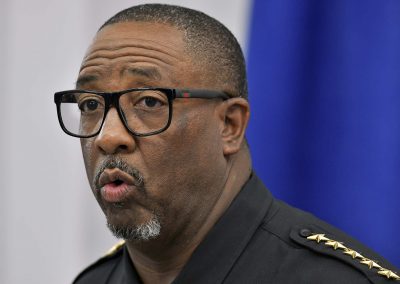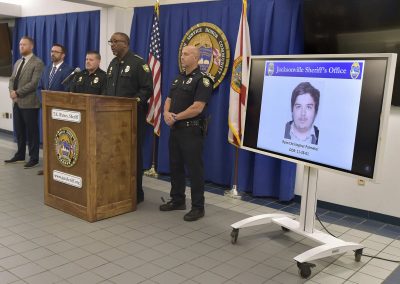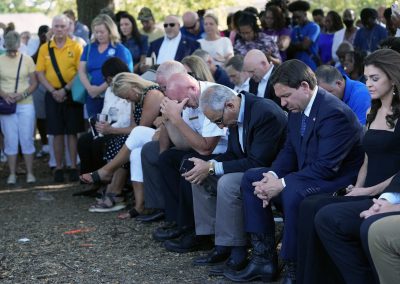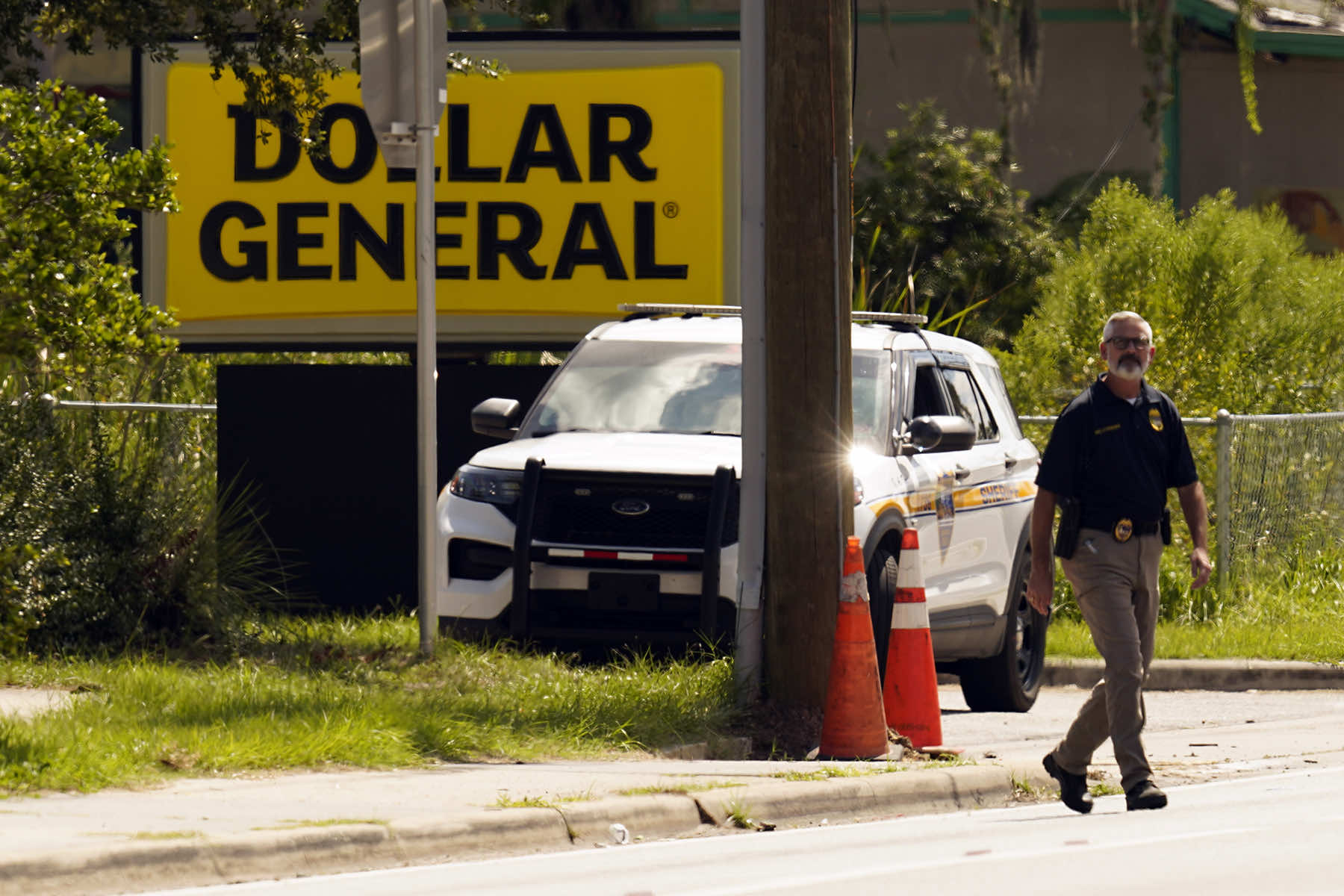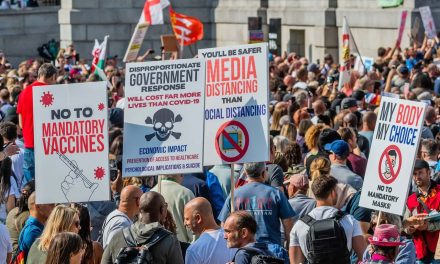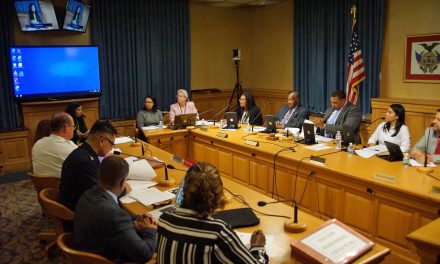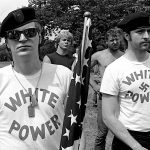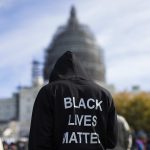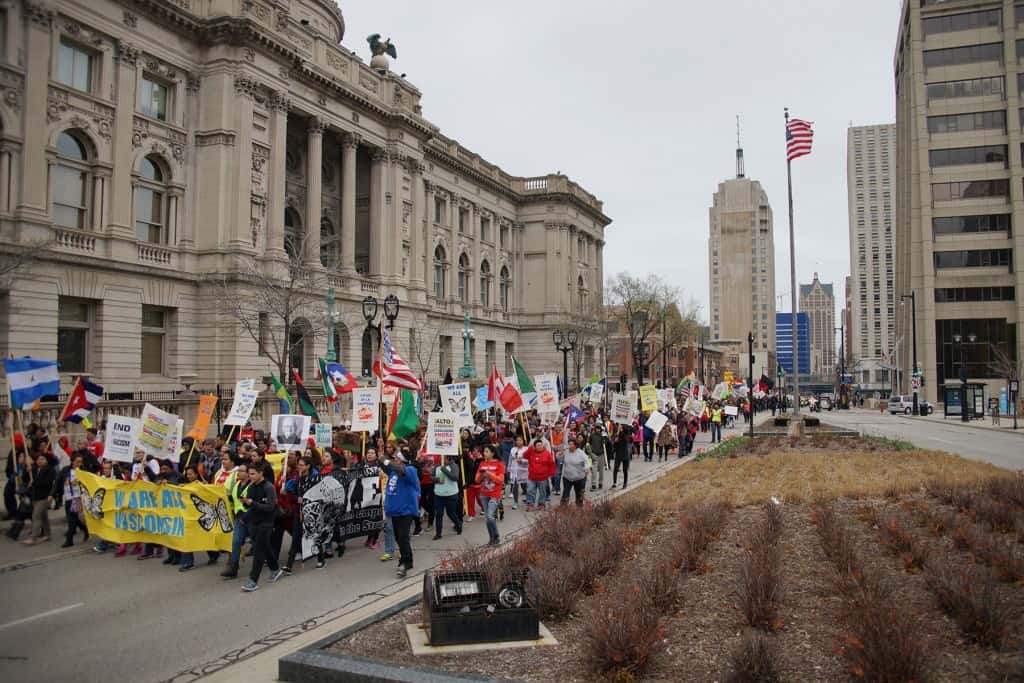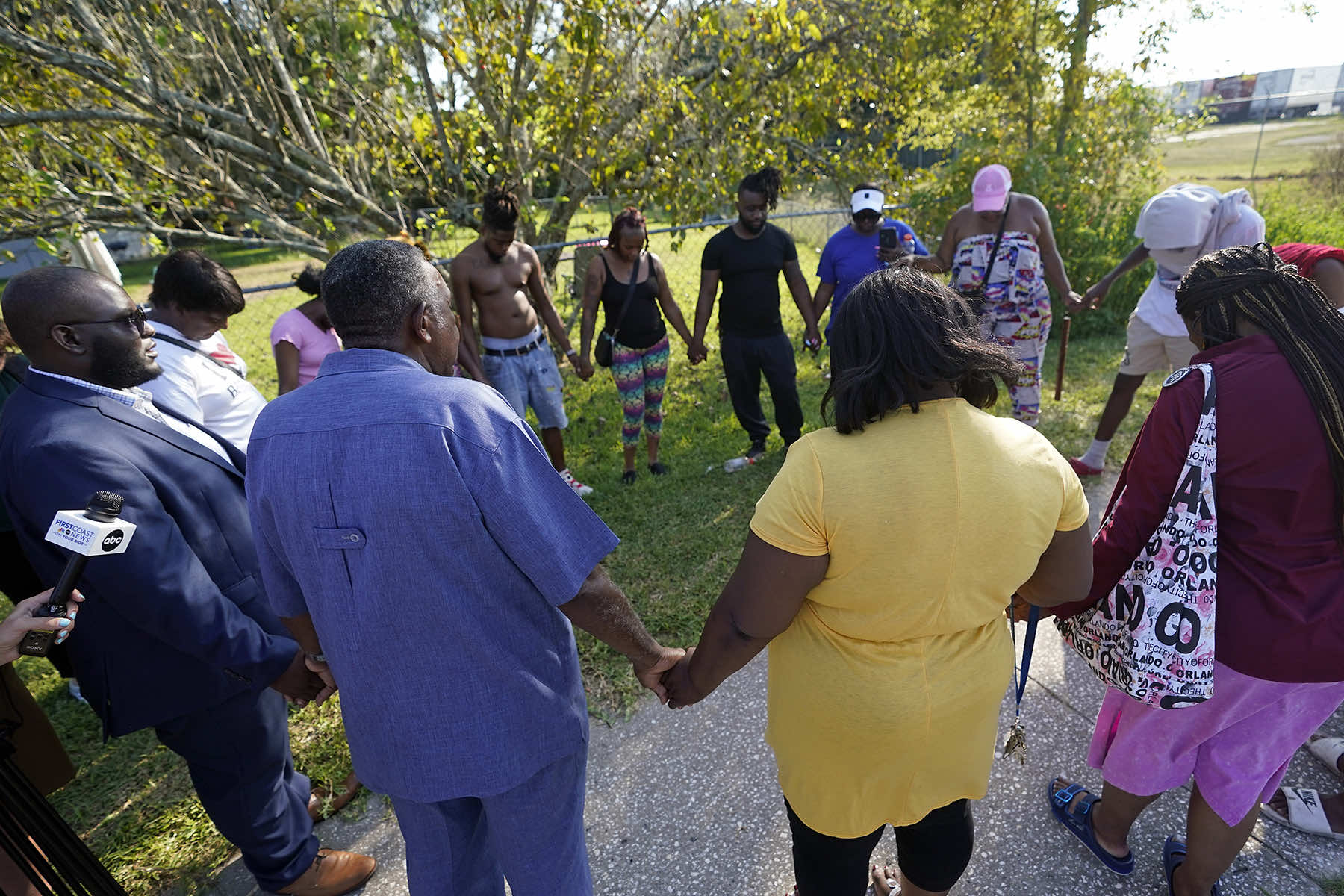
By some measures, the city was making strides to emerge from its racist past. But the killing of three Black people on August 26 by a young, white shooter was a painful and startling reminder that the remnants of racism continue to fester in Jacksonville, Florida.
What happened in Jacksonville, said longtime resident Rodney Hurst, 79, “could have happened anywhere, except it did happen in Jacksonville.”
The shooting occurred as the Jacksonville community prepared for an annual commemoration of what is known as Ax Handle on August 26. In an unforgettable exhibition of brutality 63 years ago, a mob of white people used baseball bats and ax handles to club peaceful Black demonstrators protesting segregation at a downtown lunch counter on August 27, 1960. Police first stood by but joined the white mob when the Black group began fighting back. Instead of collaring any white instigators, police arrested several Black people.
Hurst, who was 16 when the historic violence erupted, has been encouraged by progress following the Civil Rights movement, but worries racism once again has become normalized by the nation’s divisive politics.
Even so, he said, “Jacksonville did not need anybody to help its racism along.”
Jacksonville County Sheriff T.K. Waters said notes left by the 21-year-old shooter, Ryan Palmeter, made it clear he was targeting Black residents of a predominantly African American neighborhood in Jacksonville.
Palmeter used an AR-15 semi-automatic rifle and a Glock handgun to kill his victims, Waters said, both weapons bought legally earlier this year despite his involuntarily committment for a 72-hour mental health examination in 2017.
He fatally shot Angela Michelle Carr, 52, as she sat in her car and chased A.J. Laguerre, 19, through a Dollar General store before shooting him. The third victim, Jerrald Gallion, 29, was killed as he entered the store.
Then the shooter killed himself.
Palmeter sent statements to federal law enforcement and the media suggesting his attack marked the fifth anniversary of a shooting at a video game tournament in Jacksonville that killed two people. That assailant also killed himself.
Somewhat puzzling is the apparent lack of a racial motive in the shooting five years ago, leaving questions about why Palmeter cited the attack in his writings.
Jacksonville is home to nearly 1 million people, about a third of them Black, just south of Florida’s border with Georgia. The city is still coming to terms with its Southern heritage while trying to become more cosmopolitan in the shadows of the state’s other major cities: Miami, celebrated for glitzy nightlife and inviting beaches, and Orlando, home to the world-renowned Disney World and Universal theme parks.
In recent years there were signs Jacksonville was changing, and it might still be.
Jacksonville elected its first Black mayor in 2011. A couple years later, there was another watershed moment when a coalition of activists succeeded in persuading the school board, after years of failed attempts, to rename a high school honoring Nathan Bedford Forrest, a Confederate general and the first grand wizard of the Ku Klux Klan.
Since then, the city has continued to sever ties to the racist past by removing a Confederate soldier statue atop a memorial in a park bordering City Hall. The excision was finalized by Jacksonville’s former mayor, a Republican who once served as his party’s statewide chair.
Donald Trump took Duval County in the 2016 presidential election. Two years later, a Black Democratic candidate running for governor, Andrew Gillum, won the county but narrowly lost statewide to now-Gov. Ron Desantis. In 2020, Joe Biden carried Duval County thanks to a heavy turnout from Black voters — the first time a Democratic presidential candidate has won the county since Jimmy Carter in 1976.
Earlier this year, Democrat Donna Deegan, who is white, was elected mayor of Jacksonville. Waters, who is Black and a Republican, took the helm of the sheriff’s office in January.
“It feels some days like we’re going backward,” Deegan said through tears on August 27 while addressing a congregation at St. Paul AME Church, 3 miles (4.8 kilometers) from the site of the shooting.
Former state Sen. Audrey Gibson, who represented a mostly Black district in Jacksonville, said a single event should not define the community.
“I don’t think you can use one person to say there’s a racism issue in Jacksonville,” she said, even if a historical pattern of racial divides persists today, particularly in wealth and the economy.
There are still many unknowns about the shooter’s motives and why he chose that particular neighborhood, Gibson said, even though “it was obvious that he was trying to attack Black people regardless of who they were.”
Social justice activists such as Michael Sampson, who founded the Jacksonville Community Action Committee, have long hoped for permanent change but continue waiting.
August 26’s shooting is “a reminder that we’re still at the same place,” he said.
Sampson recalled the killing of 10 Black people at a Buffalo supermarket in May 2022 by a white supremacist, who was sentenced to life in prison in February.
“This happened in Buffalo,” Sampson said. “You had a racist killer indiscriminately trying to kill Black people, and now this happened in Jacksonville — it happened in Jacksonville — so there’s a culture that needs to be addressed out there.”
Ax Handle on August 26 serves as a continuing reminder of Jacksonville’s racist past, Sampson said, and the brutality against Black residents that repeated with the shooting and deaths of three people.
“That violence,” he said, “is still something that we face every day.”

